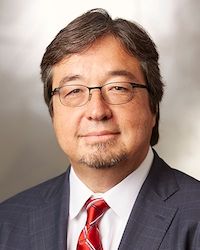Nusinersen Reports Multiple Motor System, Survival Benefits for Spinal Muscular Atrophy
The investigative therapy for SMA reported various efficacy results in a phase 3 extension trial.

Alfred Sandrock, MD, PhD
New analysis has reported that nusinersen (Spinraza) has long-term benefits for patients with spinal muscular atrophy (SMA), according to Biogen.
In interim research presented at the 70th annual meeting of the American Academy of Neurology (AAN) in Los Angeles, CA this week, researchers from the SHINE open-label extension study and CS2/CS12 studies announced benefits in motor function, walking ability, and fatigue in patients to undergo the therapy for SMA.
SHINE, an ongoing phase 3, multicenter, open-label extension study for patients with SMA who previously participated in the nusinersen clinical trial programs (CS3A, ENDEAR, CHERISH, CS12 and EMBRACE), is evaluating the long-term safety, tolerability, and efficacy of nusinersen. Evaluations of patients with SMA are planned to reach up to 5 years, but Biogen’s most recently announced analysis comes from interim results reported as of June 2017.
The results focused on 89 patients with infant-onset SMA who had previously transitioned from the ENDEAR study, another phase 3 trial. Patients were either given initial nusinersen therapy in ENDEAR that continued through their SHINE transition (65), or transitioned from the control arm in ENDEAR to active therapy in SHINE (24).
Both patient groups reported improvements in HINE-2 motor milestone markers, as well as general motor function via the CHOP INTEND metric. Among patients who initiated and continued nusinersen therapy through both trials, the median time to death or permanent ventilation was 73 weeks. Among those to initiate placebo treatment, median time to death or permanent ventilation was 22.6 weeks within ENDEAR. A majority of patients who were alive without permanent ventilation following placebo treatment in ENDEAR reported no adverse events while receiving nusinersen for a median time of 9.2 months.
Diana Castro, MD, lead study author, UT Southwestern Medical Center, Dallas, Texas, said in a statement that the analysis demonstrated improved motor function, as well as event-free survival time in patients to receive the therapy — regardless of initial therapy.
“It also confirms that those who initiated Spinraza treatment earlier saw greater motor milestone performance that continued to improve over time, and that no new safety concerns were identified,” Castro said.
In supplemental analysis of data subsets from CS2 and CS12 — a pair of multicenter, open-label trials evaluating change in SMA patients’ performance in the Six-Minute Walk Test (6MWT) and fatigue — researchers from Columbia University Medical Center report more benefits of nusinersen.
The team gauged analysis of the walking ability and fatigability of 14 ambulatory patients aged 2-15 years old with SMA Type 2 (1) or Type 3 (13) at the enrollment phase. At baseline, participants walked a median distance of 250.5 meters, and reported baseline median fatigue levels at 14.8%.
After receiving nusinersen therapy, walking distance increased by a median 98 meters, while fatigue levels decreased by a median 3.8% over approximately 3 years.
SMA is an inherited condition that results in the loss of motor function and potential mortality in infants and toddlers. It is currently the leading genetic cause of death in both age groups, and is caused by reduced levels in the survival motor neuron (SMN) protein.
Nusinersen injection therapy is being developed globally for the treatment of SMA by Biogen. It functions as an antisense oligonucleotide that treats the mutations or deletions of the SMN1 gene located in the chromosome 5q, which leads to the initial protein deficiency.
The results reinforcing its “unprecedented and compelling efficacy” across various SMA patient populations for mobility, motor function, and chances of survival brings excitement to Biogen Executive Vice President and Chief Medical Officer Alfred Sandrock, MD, PhD.
“We look forward to continuing to work with healthcare providers, institutions and SMA communities to provide access to SPINRAZA for those in need, no matter their age, disease severity or duration of the disease,” Sandrock said.
Click here to sign up for more MD Magazine content and updates.
For more extensive coverage from the American Academy of Neurology Annual Meeting (AAN) and other neurology-focused meetings, visit MD Magazine’s sister site NeurologyLive.
Related Coverage >>>
Nusinersen Reports Multiple Motor System, Survival Benefits for Spinal Muscular Atrophy
Liquid Therapy RG7916 Improves Protein Levels for Infants with SMA